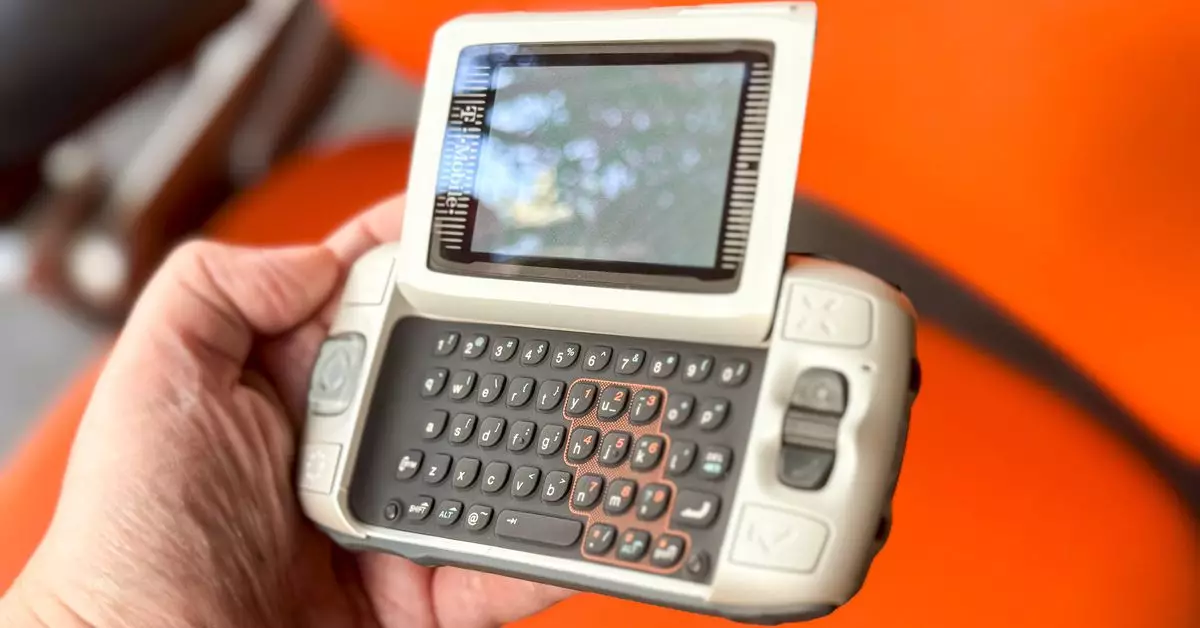The T-Mobile Sidekick, also known as the Danger Hiptop, was a groundbreaking device that revolutionized the way we interacted with mobile technology. While the Sidekick is often celebrated for its introduction of cloud sync, unlimited data, and real web browsing on mobile, one key feature that often gets overlooked is the Jump button. This button, located on the Sidekick’s keyboard, allowed users to seamlessly switch between apps through preset and programmable keyboard shortcuts.
Unlike modern smartphones where opening an app can involve several taps or swipes, the Sidekick’s Jump button made multitasking effortless. Users could type notes in class, quickly switch to the web browser to look something up, chat on AIM, and email notes to themselves – all without ever lifting their thumbs from the keys. This level of efficiency and convenience was truly ahead of its time.
Former Danger director of design, Matías Duarte, emphasized that the Jump button was much more than just a glorified home button as it was often described in official manuals. Duarte revealed that the button was designed to be chorded, allowing users to press multiple keys simultaneously to unlock its full potential. This level of customization and productivity set the Sidekick apart from its competitors at the time.
True Multitasking and Notification Innovation
One of the key features that Duarte highlighted was the Sidekick’s true multitasking architecture. Unlike other mobile devices of its era, the Sidekick did not kill apps when they were closed, allowing them to run in the background and stay connected to the internet. This seamless integration of apps and notifications laid the foundation for the multitasking capabilities that we see in smartphones today.
Duarte also touched on the importance of notifications on the Sidekick, stating that they were designed to be non-intrusive yet informative. Users could easily jump to a notification if they wanted to address it or simply ignore it without being interrupted. This approach to multitasking and notification management was a defining aspect of the Sidekick’s user experience.
The Legacy of the Sidekick’s Keyboard Shortcuts
While the Sidekick may have met an unfortunate end due to various factors, including security breaches and data loss, its legacy lives on in the form of keyboard shortcuts that continue to influence mobile devices today. The Menu button, which offered chorded keyboard shortcuts for tasks like cut, copy, paste, and starting a new email, was another example of the Sidekick’s commitment to efficiency and simplicity.
Duarte admitted that adding the Menu button was a challenge due to the device’s focus on simplicity and cost-efficiency. However, he recognized the value that these shortcuts brought to power users who relied on the Sidekick for their daily tasks. Despite the device’s eventual demise, the impact of its innovative features, such as keyboard shortcuts, can still be seen in modern smartphones.
The T-Mobile Sidekick may not always receive the recognition it deserves in the history of mobile technology. Still, its contributions to multitasking, notification management, and efficiency are undeniable. The Jump button and other keyboard shortcuts exemplify the device’s commitment to empowering users and streamlining their mobile experience. The Sidekick’s legacy lives on in the design and functionality of today’s smartphones, making it a forgotten marvel worth revisiting.


Leave a Reply